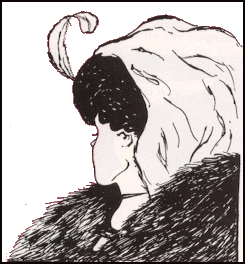How can we bridge the gap between belief and feeling?
We begin with three stories.
1. A professor takes his students to a screening of Waiting for Superman, a documentary lauding the American school-reform movement. All semester, the professor, Mark Stern, had been walking his class through criticisms of the movement, emphasizing how it extends neoliberal policies — promoting market-based solutions and gutting state funding — to ensure political domination by moneyed interests. Yet despite having equipped the students with the critical tools needed to effectively dismantle the film’s argument, many left the theater in tears, moved by its narrative.
2. Philosopher N.R Hanson developed this thought experiment: Astronomers Tycho Brahe and Johannes Kepler look out over the horizon at dawn, watching the sun slowly ascend in the sky. In one sense, they see the same thing: a yellow disk and a subtly curved line drawing progressively further apart. Yet they also do not see the same thing. Brahe, who believed that the sun orbited the earth, perceives the sun to be rising in the sky, while Kepler, the heliocentrist, sees the earth slowly rotating, shifting his vantage point relative to the sun and the horizon.
3. It is 1970, and the Weather Underground has just declared a state of war. In a recorded statement, the radical leftist group makes this declaration:
All over the world, people fighting Amerikan imperialism look to Amerika's youth to use our strategic position behind enemy lines to join forces in the destruction of the empire. Black people have been fighting almost alone for years. We've known that our job is to lead white kids into armed revolution ... Kids know the lines are drawn. Revolution is touching all of our lives. Tens of thousands have learned that protest and marches don't do it. Revolutionary violence is the only way …
Within the next fourteen days we will attack a symbol or institution of Amerikan injustice. This is the way we celebrate the example of Eldridge Cleaver and H. Rap Brown and all black revolutionaries who first inspired us by their fight behind enemy lines for the liberation of their people.
The group makes good on its threat, detonating a bomb at the New York City police headquarters within three weeks. That September, a number of Weatherman operatives help Timothy Leary, the godfather of LSD, escape from prison. A year and a half later, they blow up a bomb inside the Pentagon.
***
What separates the apparently conviction-lacking students of the first anecdote from the militantly radicalized students of the third? Both were given a healthy dose of leftist criticism, yet the Weathermen ended up declaring war while the moviegoers were beguiled by neoliberal propaganda. Why were Mark Stern’s students so taken in by Waiting for Superman? If his students were convinced of school reform’s fundamental injustice, why were they still moved by the film?
In his reflections on the incident, Stern rejects the hypothesis that his students cynically parroted what they were taught without accepting it to get a good grade as well as the even more cynical possibility that they embraced the criticism of neoliberalism only to absolve themselves of the guilt of benefiting from it. Rather, Stern concludes that the students crying in the theater were crying for help. They were not moved by the film’s heroes; they saw through them and cried instead out of hopeless despair and longing for a true utopian vision.
Countless other moviegoers also left in tears. Were they all thwarted emo-utopians as well? To think that the students’ identical response emerged from some special, critically minded emotional state seems wishful thinking on Stern’s part. Rather, the students’ response reflects an important truth: One's political conviction is divided across two planes — the intellectual and the phenomenological — and at times, the two can and must come apart. For those seeking to impart conviction, then, an understanding of the nature of these two planes and their connection becomes essential. We tend to accept that if one strongly believes in a particular normative or political principle — e.g., if one truly believes that education reform is an underhanded ploy by greedy capitalists — that belief is reflected in how one feels about certain situations. Yet there are many instances where an adopted belief will fail to cross the threshold into perception, resulting in a divided politics that, importantly, can compromise the will. To overcome such akrasia, it is necessary to find methods of bridging the gap between the intellectual and the phenomenological, of perceptualizing politics to render belief more easily convertible into action.
***
Hanson’s story of Brahe and Kepler helps illustrate this point. He presents the thought experiment to support his claim that perceptual experience is “theory-laden”: that everything we perceive comes to us, prepackaged, in neat conceptual containers. Consider, for example, the classic gestalt image of the old/young woman:
In one sense, Hanson argues, everyone sees the same thing: densely packed, overlapping dark lines in the bottom righthand corner, a few wavy lines in the upper right, and, just left of center, two curving lines resembling a pair of upturned calipers. But different people will, in another sense, see very different things: Some see an old woman looking left, while others see a young woman turned partly away. (The caliper-shaped lines form the nose of the old woman and the chin of the young one.)
Hanson claims that viewers don’t consciously interpret the image, choosing what they make of the visual data. Rather, perceptions simply appear in their minds, pre-structured by the relevant concepts. According to Hanson, to see is to see as — to spontaneously see “suns” or “old women,” all presented to our consciousness as conceptual unities.
Different beliefs can yield entirely different phenomenological experiences. To be told that the earth revolves around the sun is not merely to be presented with a "true" fact; it opens a new perceptual reality wherein the sun seems not to rise but to hang in space as the horizon slowly dips away from its light. To a degree, people see what they have come to believe.
If concepts structure the contours of our perception this way, then it follows that reason and discussion can fundamentally shift the way we perceive the world. But beliefs do not necessarily reshape phenomenological experience. Though I know that marked squares in the chessboard above are actually the same color, they will never appear to me as such. Likewise, though physics tells us that solid objects are, in fact, almost entirely empty space, it is difficult to imagine actually perceiving them in this way. And one may be fully aware of the gambler’s fallacy, yet still feel as though black is imminent when the roulette wheel has spun red 10 times in a row. Further, even when beliefs do modify perception, the process is often gradual: rather than a sudden gestalt shift, a newly acquired belief settles slowly into the mind, with a new perceptual reality subtly replacing the old.
This relation between belief and perception isn't limited to scientific matters. Political belief, too, is similarly spread across the intellectual and the phenomenological. A phenomenological account of politics renders the crying of Stern’s students understandable: the students’ mode of political perception had yet to catch up to what Stern hoped were their newfound beliefs. Though they may have adopted the criticisms, the world continued to present itself to them in the familiar shapes and patterns that give neoliberalism the semblance of legitimacy — Randian innovators and parasitic takers, bootstrapping entrepreneurs and inefficient bureaucrats, voluntary exchanges and coercion-backed taxation, and so on. Thus, instead of experiencing cynicism and anger at the film’s manipulative effort to advance the interests of capital, the students found themselves in sympathetic tears.
***
The tears of Stern's students suggest that the left must develop methods for the perceptualization of politics if it is to counter the allure of capitalist narratives — narratives that include not merely audiovisual agitprop but also the taken-for-granted assumptions and expectations that are built into capitalist society. One is constantly besieged with emotional appeals that tacitly support the market ranging from compliments meant to elicit pride for embracing capitalist living (“Wow, you got a job at Goldman-Sachs?! Congratulations!”) or appeals intended to provoke self-righteous anger (“Why are the poor so lazy?”).
Many have discussed the difficulties in overcoming ideology — that pernicious tendency to overlook contradictions and questionable premises of arguments that justify privilege. One might shine light on these flaws and force concessions on the argumentative level, but if hard-fought changes in belief don’t yield shifts in perception, then the battle is far from won. Until neoliberalism appears oppressive or unjust, people will continue to be amenable to exonerating justifications for market fundamentalism. Even if they accede to criticisms of the status quo, they may remain complacent, belief alone being too weak a motivator to inspire changes in micropolitical practice in the face of a status quo perceived as generally benign.
Yet recognition of the problem suggests solutions. Political gestalt shifts may be analogous to visual ones. Merely explaining that the first image shows an old woman as well as a young one will not make someone see it, but recharacterizing the image’s component parts — noting how the caliper-shaped lines might be a cheek — can trigger a shift.
What sort of precise redecsription could do the same for neoliberalism? Instead of presenting macro-level critiques one might instead attempt micro-level reframing of basic political categories. For instance, “coercion” might be recast as a conditional willingness to satisfy a dependent’s needs: the mugger who makes her victims choose between their money and their lives, for example, identifies a group dependent on her to satisfy a need (the need to not be stabbed) and makes her satisfaction of that need conditional on them taking some action (giving her money). But then what of the capitalist who identifies a group dependent upon her to satisfy a need (the need to not starve) and makes her satisfaction of that need conditional on them taking some action (doing her labor)?
To perceive neoliberalism as oppressive requires the ability to put smaller experiential pieces into a pattern. It requires seeing that capitalism’s component parts — privatization, deregulation, risk-shifting, labor flexibility — together form a pattern of injustice. Shifting the terms of representation can make such patterns clearer: Consider the sequence 1, 3, 7, 15, 31. Most people will glance over these numbers without noticing any meaningful relation between them. However, if one reorganizes the information into a new ontological grouping by rewriting the sequence in binary (1, 11, 111, 1111, 11111), a striking and obvious pattern reveals itself. Similarly, by recasting experience using novel political ontologies and taxonomies, one might render visible macro-patterns and perceptions that were previously unavailable.
However, before embracing these means, the goal of radical pedagogy must be carefully considered. In the documentary The Weather Underground, former members of the group are interviewed about why they were driven to violence. The heavily phenomenological language they use to explain their actions is striking. Former Weather Underground leader Bill Ayers explains that “the sense was that we had to do whatever we had to do to stop the war” and that “the mood … kind of ricocheted between determination and despair. There was a real sense that things were gonna get pretty bad.” Similarly, another former member Brian Flanagan says, “The Vietnam war, it made us crazy, it was sort of a mass mania driven by the United States bombing of Vietnam, among other things.”
This language — speaking of “moods” and “manias,” and how things “seemed” and “felt” — seems indicative of a politics that has been heavily perceptualized. Thus, when the radicals rallied behind the slogan “Bring the war home!” perhaps for them it already was.



